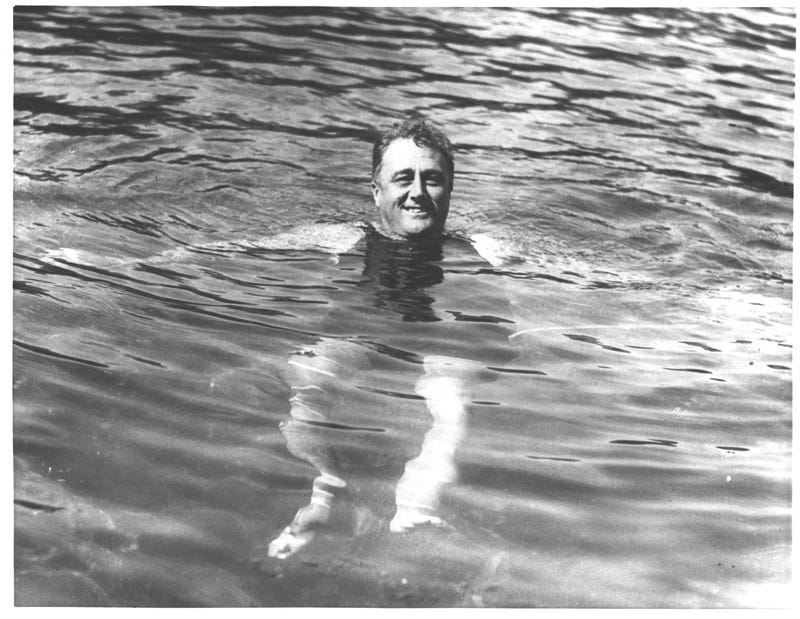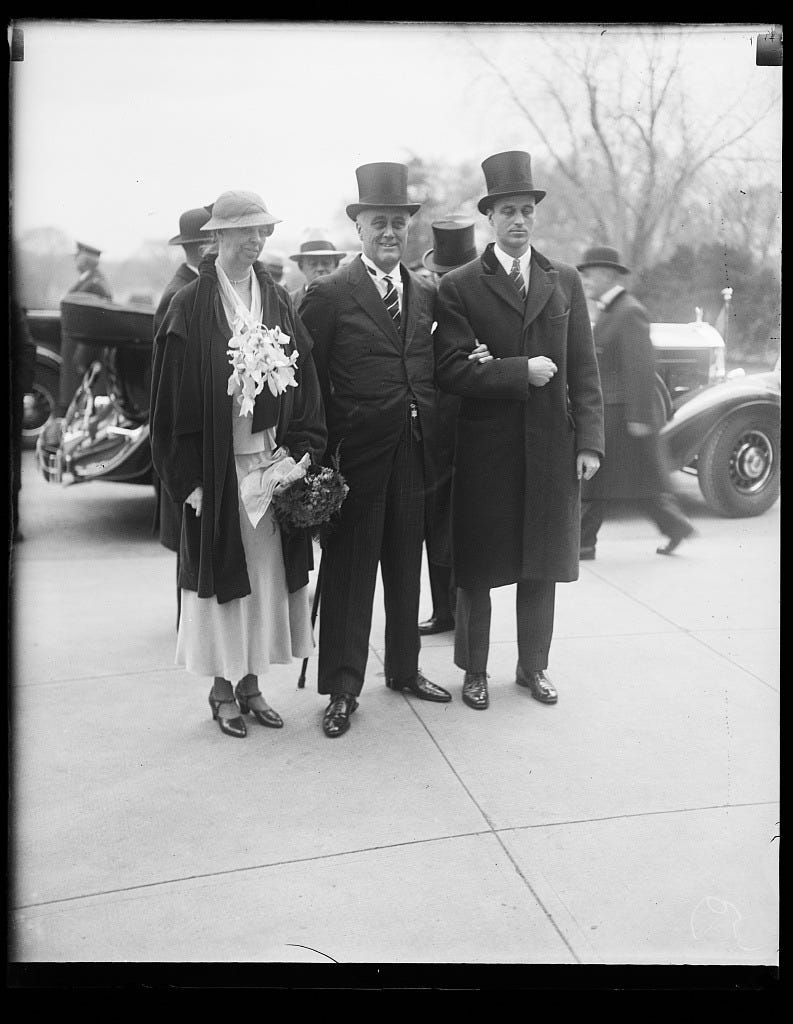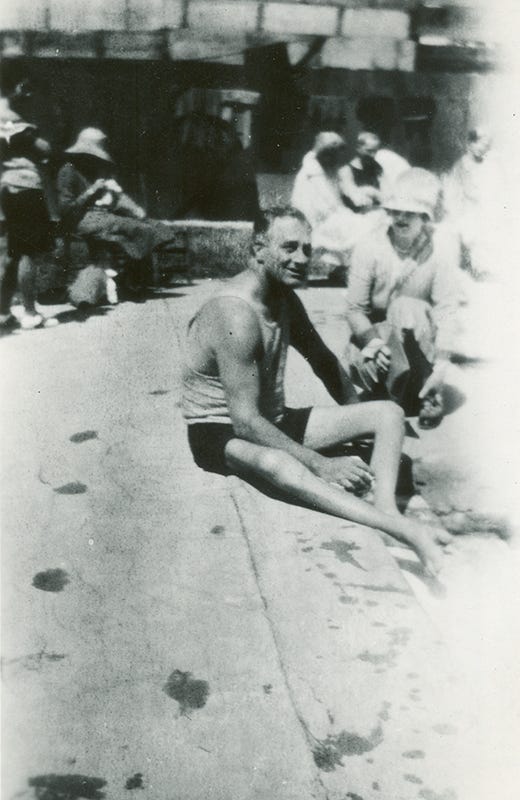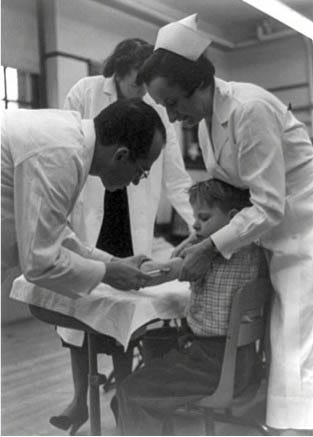Remarkable Triumphs After 50: FDR
Paralyzed at 39, Elected President at 50, Starts March of Dimes at 56
WHY READ THIS? The seeds of your mid-life setback might grow into a legacy tree providing life-giving fruit for others.
Editor’s note: This is the first installment of what I hope will be a series of people experiencing remarkable triumphs after age 50.
When fired at age 50, I turned to history for inspiration. I found people who bounced back from seemingly insurmountable setbacks to see success in their 50s and beyond.
Their stories helped fuel my comeback.
To inspire you, I want to share the stories of some of my favorite overcomers, starting with Franklin D. Roosevelt and continuing with Ronald Reagan, Nelson Mandela, and perhaps more contemporary examples.
Read to the end of each story to get five triumphant lessons of each man’s success so you can apply them to your comeback story.
If these history-changing men faced huge setbacks yet bounced back to achieve greatness in their 50s and beyond, you can, too!

FDR: Paralyzed by Polio at Age 39
Sometimes, the seeds of mid-life failure grow into your most meaningful personal legacy.
Such was the case with Franklin Delano Roosevelt, who, at age 39, excused himself before dinner to retire to his bedroom for some rest. He thought he had an innocuous cold accompanied by lower back pain and unusually sensitive skin. He woke up unable to move his legs.
The cause was poliomyelitis, commonly called “polio.”
Polio was just getting started in America. Caught by a virus, it would soon paralyze more than 20,000 Americans a year, many of them children.
FDR’s great personal goal was to walk again.
“I tried to persuade myself that the trouble with my legs was muscular,” Franklin D. Roosevelt said, “that it would disappear as I used (them).”
Paralysis was a source of embarrassment in that era, and a wheelchair was a sign of weakness and failure.
FDR hid his Paralysis
Few Americans knew their president was paralyzed.
Official images show him seated in a car with that confidence-inspiring, toothy grin, clutching his son's arm. His upper body was so strong that he could stand up at a lectern with the help of crutches and use his arms and hands to steady himself without falling, all the while showing the public no signs of his life in a wheelchair.
The public occasionally saw photos of Roosevelt standing, seemingly on his own. Most didn’t notice that he was always propped up, as he was here at his first inauguration with his wife, Eleanor, on his right arm.

Despite his disability, or perhaps because of it, Roosevelt had the drive and determination to get elected president at age 50. With fortitude and courage, he led the U.S. through historic turning points, including climbing out of the Great Depression and winning World War II.
Personal Quest: Walk Again
His great personal quest was to walk again and help others afflicted with polio do the same. Roosevelt found a place where he could find mobility and happiness: 90-degree, amazingly buoyant springs gushing from a mountain.
In the waters of Warm Springs, Georgia, Roosevelt could, almost miraculously, move his right leg, providing new hope for himself and others struck by polio.
"I feel that a great cure for infantile paralysis and kindred
diseases could well be established here."
— Franklin D. Roosevelt at Warm Springs
Roosevelt invested two-thirds of his fortune, around $200,000, in buying 1,200 acres in Georgia, where he created the world’s first modern polio treatment center.
Word spread. People from all across the country made the trip to Warm Springs to seek healing in the waters. Roosevelt welcomed them, regardless of their ability to pay.
“You would howl with glee,” he once told a friend, “if you could see the clinic in operation and the patients doing various exercises in the water under my leadership.”

In addition to his work to fight polio at Warm Springs, Roosevelt created the National Foundation for Infantile Paralysis when he was 56. Americans rallied around the president’s private cause, and children donated dimes at Christmas.
The organization became known as “The March of Dimes.”
Roosevelt died on April 12, 1945. He was 63. He never achieved his goal of walking again.
The March of Dimes

Ten years after FDR’s death, Dr. Jonas Salk, a March of Dimes grantee, developed the first successful polio vaccine. The vaccine did with an injection what Roosevelt hoped he could do with exercise at Warm Springs: eradicate polio, the leading cause of disability in the United States.
The president who pulled the country out of the Great Depression but couldn't recover his ability to walk left a legacy beyond politics.
FDR illustrated that the seeds of suffering planted when we’re young sometimes bear fruit not for ourselves but for others. Knowing this is enough to press on.
In his first inaugural address, during the country's Great Depression, FDR boldly proclaimed, “The only thing we have to fear is fear itself—nameless, unreasoning, unjustified terror which paralyzes needed efforts to convert retreat into advance.”
The nation didn’t know that the man speaking those words was paralyzed himself, and his condition would be intentionally hidden from the public for years.
FDR didn’t fear. He didn’t retreat. He advanced, and his efforts led to a cure for polio.
Five Triumphant Lessons from FDR
1. Life-changing calamity can strike without warning, with nobody to blame.
2. With a positive mindset and the help of others, you can find ways to overcome your disabilities, whatever they may be.
3. True joy comes in helping others, even as you wait for your miracle.
4. You can fail to accomplish your big goal but still succeed in ways that leave a legacy you could not imagine.
5. Your greatest weakness can become a warm spring of hope and inspiration to others.
NEXT IN THIS SERIES: Ronald Reagan hits rock bottom in a corny dance for a vaudeville show at a Las Vegas hotel.





Patty, thank you for your comment. I learn so many lessons from history. I'm glad FDR's story inspires you to press on.
Your comment encourages me to publish more uplifting true stories from history. I have drafts of stories about Ronald Reagan, Nelson Mandela and Walt Disney.
I live near DC, in Northern Virginia. As a career and life coach who has learned how to make successful career pivots, I wonder how I can help some of the thousands of federal workers and contractors in our area turn unemployment or the fear of losing their job into an opportunity for positive change.
What do you worry about most?
What advice, information, etc. might help?
I loved this. It's pretty hard to feel sorry for yourself (like me if you live in DC and feel worried about being fired/laid off) after reading FDR's story as you told it! Thank you!